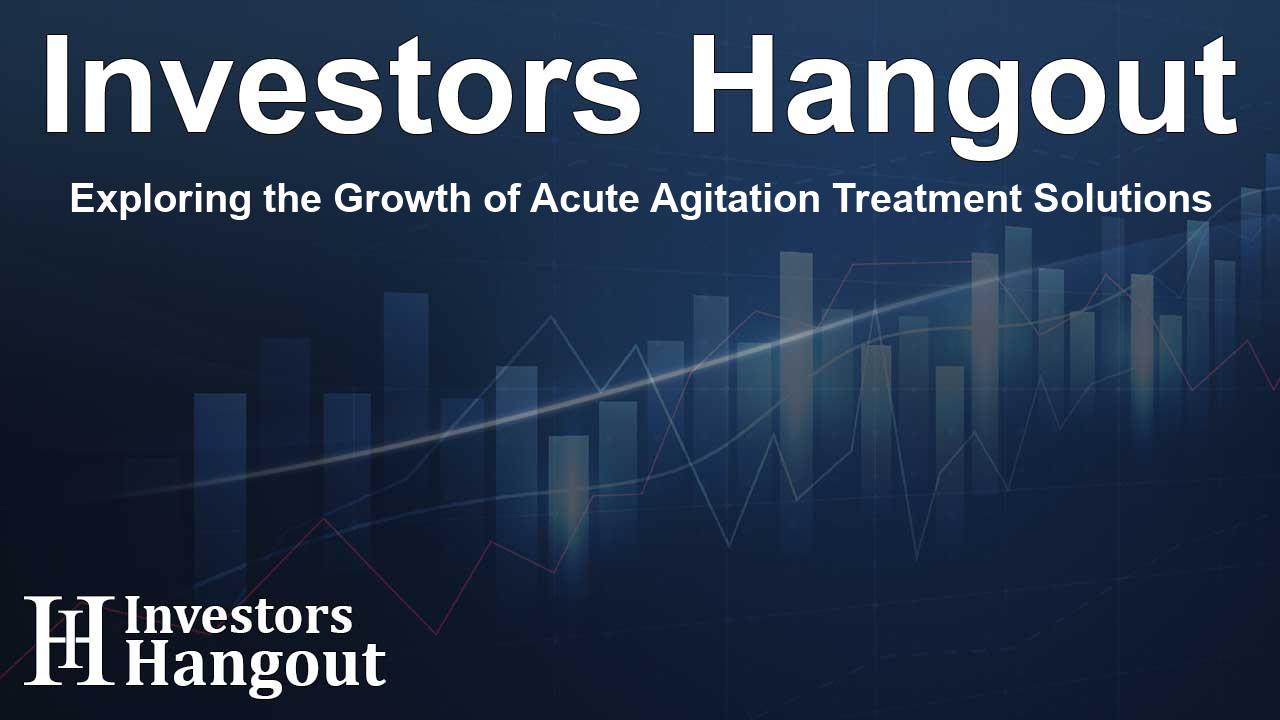Exploring the Growth of Acute Agitation Treatment Solutions

Emerging Trends in Acute Agitation and Aggression Treatment Market
The global acute agitation and aggression treatment market is witnessing a significant expansion. It currently stands at around US$ 5.0 billion, with projections estimating it to reach approximately US$ 8.2 billion by 2034. This anticipated growth reflects a CAGR of 4.6% from 2024 to 2034. Factors driving this market upward include an increase in the prevalence of agitation and aggression cases, particularly in hospital emergency departments and psychiatric units.
The Impact of Mental Health Awareness
Heightened awareness surrounding mental health has led to greater recognition and diagnosis of conditions that manifest as acute agitation and aggression. This awareness not only fosters a demand for rapid treatment solutions but also emphasizes the importance of effective intervention strategies.
Key Players in the Market
Major companies are crucial to the market landscape, with a handful of firms holding significant market share. Key players include Eli Lilly and Company, Pfizer, GlaxoSmithKline, Johnson & Johnson, and Teva Pharmaceutical Industries Ltd. These companies are rapidly innovating and expanding their product lines to meet the diverse needs of patients and healthcare providers.
Innovations in Treatment Approaches
Innovation is at the forefront of the treatments being developed for acute agitation and aggression. Pharmaceutical leaders like Pfizer and Johnson & Johnson are focusing on non-invasive therapies, such as sublingual tablets and nasal sprays, designed for fast-acting relief in emergency situations. These innovations aim to enhance patient safety and comfort, making them more appealing to healthcare professionals.
Understanding the End Users
The primary consumers of these treatments include hospitals, psychiatric clinics, and emergency care units. These facilities prioritize the need for interim solutions that can help calm patients swiftly while minimizing side effects. Consequently, healthcare professionals seek treatments that are both efficient and safe.
Market Growth Drivers
The rise in mental health issues, including bipolar disorder and dementia, correlates with the increased demand for efficient treatments. Several prominent factors are shaping market growth:
- Growing Mental Health Awareness: The emphasis on mental health care has dramatically increased diagnosis rates, subsequently leading to a higher demand for effective treatments during episodes of agitation.
- Pharmaceutical Innovations: Continuous investment in research is yielding novel treatment options, including rapid-onset formulations that promise quicker relief from symptoms.
- Aging Population: With a growing elderly demographic, there is a noticeable uptick in neurological disorders that frequently result in aggressive behavior, pushing market growth further.
Future Projections and Insights
Looking ahead, the hospital segment is anticipated to maintain its dominance, projected to secure over 50% of the treatment market revenue by 2035. The Asia-Pacific area, particularly, is experiencing a surge in mental health awareness and healthcare investment, paving the way for potential market growth.
Market Segmentation Overview
The market can be segmented based on treatment approaches, indications, and distribution channels. Key segments include:
- Treatment Approach:
- First-Generation Anti-Psychotics: Chlorpromazine, Haloperidol
- Second-Generation Anti-Psychotics: Quetiapine, Olanzapine, Ziprasidone
- Benzodiazepines: Lorazepam, Midazolam
- Alpha-2 Adrenergic Agonist: Clonidine, Dexmedetomidine
- Indication:
- Alcohol Withdrawal
- Bipolar Disorder
- Dementia
- Depression
- Drug-induced agitation
- Schizophrenia
- Distribution Channel:
- Hospital Pharmacies
- Retail Pharmacies
- Online Pharmacies
Frequently Asked Questions
What is the projected growth of the acute agitation treatment market?
The market is expected to grow from approximately US$ 5.0 billion in 2023 to US$ 8.2 billion by 2034.
What are the key drivers behind market growth?
Increased awareness of mental health issues, pharmaceutical innovations, and a growing elderly population are driving factors.
Who are the leading companies in this market?
Key players include Eli Lilly, Pfizer, GlaxoSmithKline, and Johnson & Johnson.
What treatment options are gaining popularity?
Non-invasive treatments such as sublingual tablets and nasal sprays are becoming increasingly favored.
Which regions are experiencing significant market growth?
The Asia-Pacific region is seeing notable growth, influenced by rising mental health awareness and healthcare investments.
About The Author
Contact Owen Jenkins privately here. Or send an email with ATTN: Owen Jenkins as the subject to contact@investorshangout.com.
About Investors Hangout
Investors Hangout is a leading online stock forum for financial discussion and learning, offering a wide range of free tools and resources. It draws in traders of all levels, who exchange market knowledge, investigate trading tactics, and keep an eye on industry developments in real time. Featuring financial articles, stock message boards, quotes, charts, company profiles, and live news updates. Through cooperative learning and a wealth of informational resources, it helps users from novices creating their first portfolios to experts honing their techniques. Join Investors Hangout today: https://investorshangout.com/
The content of this article is based on factual, publicly available information and does not represent legal, financial, or investment advice. Investors Hangout does not offer financial advice, and the author is not a licensed financial advisor. Consult a qualified advisor before making any financial or investment decisions based on this article. This article should not be considered advice to purchase, sell, or hold any securities or other investments. If any of the material provided here is inaccurate, please contact us for corrections.
